What's New
Displaying results 4881 - 4890 of 4911

Resource | Data Sheets,
Topics included in the questionnaire: Background, Sexual Behaviour, Condom Use, STD Symptoms and Treatment, HIV testing and Exposure to People with HIV/AIDS. Survey was conducted in 5 provinces: Battambang, Sihanoukville, Kompong Cham, Phnom Penh and Siem Reap.
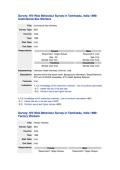
Resource | Data Sheets,
Sections of the final report cover: Background Information, Sexual Behavior, STD and HIV/AIDS Knowledge, STD Health Seeking Behavior.
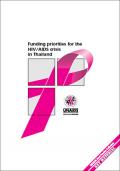
Resource | Publications,
This paper introduces the conceptual framework of interrelated consequences of the economic crisis on HIV/AIDS prevention and control. On the basis of document research and in-depth interviews with officials at national and provincial levels, we explain how the Government of Thailand has dealt with the AIDS epidemic during the period of economic hardship. The paper describes how programme managers at national and provincial levels have responded to budget cuts and discusses the impact the cuts may have on the effectiveness of programmes. The state of government finance and agreements with the International Monetary Fund have led to many policy adjustments and budget amendments.
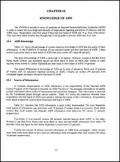
Resource | Publications,
The 1997 Viemam Demographic and Health Survey (VNDHS-II) is a nationally representative survey of 5,664 ever-married women age 15-49 selected from 205 sampling clusters throughout Vietnam. The VNDHS-II was designed to provide information on levels of fertility, family planning knowledge and use, infant and child mortality.
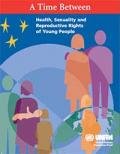
Resource | Publications,
The impending demands of adulthood make adolescence a time of intensive preparation. Success depends greatly on the health care and basic education provided during these fleeting years. For young women, greater control over sexuality and reproduction may benefit every social and economic aspect of their lives.
The United Nations Population Fund (UNFPA) responds to adolescents in the context of their overall life situation, supporting activities that address their holistic well-being and help achieve their full potential. UNFPA recognizes that young people’s education, health and life opportunities will determine the world’s economic and social prospects in the 21st century.
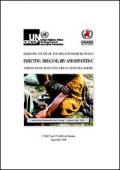
Resource | Publications,
A baseline study of injecting drug users (IDUs) in Lahore, undertaken in January and February, 1999, by UNDCP and UNAIDS, revealed an alarmingly high rate of infection by hepatitis C virus (HCV) among the study population. The study results suggest the potential for an even greater public health challenge in the form of an epidemic of human immunodeficiency virus (HIV) once the virus enters this highly vulnerable population. In addition, there is the possibility of a more generalised HIV epidemic as a result of secondary transmission through sexual activity. The study results will have important implications for the formulation of Pakistan's strategies regarding drug abuse, especially among IDUs, and for the development of appropriate and effective plans for programmes of HIV/AIDS awareness and prevention.
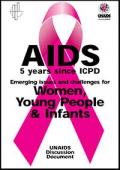
Resource | Publications,
In badly affected countries, the socioeconomic effect of this most destructive disease is measured in declining per capita incomes, shrinking profits in labour-intensive businesses, loss of productivity from cultivated land, and deteriorating public services such as health, welfare and education, as key staff fall ill and die. AIDS undermines the future, too, as families and communities struggle with the burdens of sick people and orphaned children, building up debts and frequently having to remove children from school because of lack of funds or because the labour of even the littlest is needed to help the family survive.

Resource | Publications,
Since the first case of HIV infection was diagnosed in Brunei Darussalam in 1986, HIV prevalence has remained low. A cumulative total of 498 HIV cases, including 12 AIDS cases, had been reported by the end of July 1999. The reported number of HIV/AIDS cases has decreased since 1994.
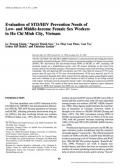
Resource | Publications,
The Ho Chi Minh City (HCMC) AIDS Committee is concerned about providing prevention and sexually transmitted disease (STD) services to increasing numbers of female sex workers (FSWs). We interviewed 250 non-brothel-based FSWs in HCMC in 1997, including 100 detained women at a rehabilitation center, and 150 women soliciting on the street (low income) and in bars (middle income). The majority of women came from provinces bordering Cambodia.
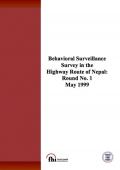
Resource | Publications,
The Behavioral Surveillance Survey (BSS) for HIV prevention programs is based on serologic sentinel surveillance survey methods used in many countries to detect the emergence of HIV and monitor epidemic trends.
The main purpose of the BSS is to determine AIDS related behaviors in the project area of AIDSCAP and measure the behavioral change over time. The project area includes highway routes and major urban areas of the Terai covering 16 districts stretching from Bhairawa in the west (Rupendehi) to Kakadbhitta (Jhapa) in the east.





